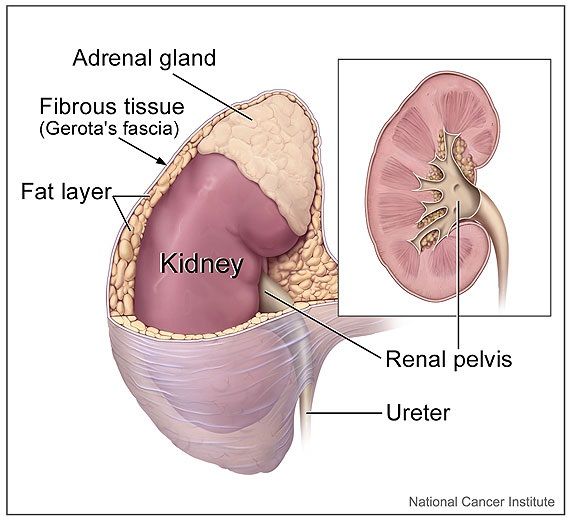Your adrenal glands are an important part of your endocrine system which produces hormones that help regulate various body functions. Adrenal cancer occurs when cells of the adrenal glands begin to multiply and grow out of control, forming a tumor, which can then become malignant (cancer).
Many tumors in the adrenal glands are benign (not cancer) but these must still be diagnosed and managed appropriately. Some benign adrenal tumors overproduce dangerous levels of adrenal hormones. Malignant adrenal tumors are very rare and only 300 to 500 cases are diagnosed in the U.S. each year.
About the adrenal glands
Your body has two adrenal glands, one on top of each of your two kidneys. Each adrenal gland consists of two parts - an outer layer called the cortex and an inner layer called the medulla. Both of these layers play an important role in making hormones that regulate your immune system, how your body responds to stress, your electrolytes, your metabolism and other functions.
The outer adrenal cortex makes the hormones cortisol, aldosterone and dehydroepiandrosterone (DHEA). These hormones help to:
- Balance the level of salt and water in the body
- Keep your blood pressure normal
- Manage your body’s use of protein, fat and carbohydrates
- Produce your body’s masculine or feminine characteristics
The inner adrenal medulla makes adrenaline-type hormones such as epinephrine, norepinephrine and dopamine that:
- Allow the body to react to stress, such as the fight or flight response produced by a surge of adrenaline
Types of adrenal tumors
Adrenal tumors can occur in one or both of the adrenal glands. Most adrenal tumors are actually benign (not cancer) and they do not spread or metastasize. Malignant adrenal tumors, however, are cancer. Tumors in the adrenal glands include several types, such as:
- Adenomas. Also called adrenal corticaladenoma, this most common adrenal tumor type is not cancerous. Small adenomas that don’t produce excessive amounts of hormones probably do not need treatment. If the tumor produces too much aldosterone, it’s called aldosteronoma. Too much cortisol results in a condition called Cushing’s syndrome. Adrenal tumors that make too much of any adrenal hormone usually require surgical removal, even if the tumor is benign.
- Adrenocortical carcinoma (ACC). This type of cancerous tumor begins in the outer, cortex layer of the gland, and may occur in one or both of the adrenal glands. It can affect people of any age but is more likely to be found in children ages 5 and younger, or adults in their 40s and 50s.
- Neuroblastoma. This rare tumor type is found in children younger than age 5 and typically diagnosed in infants. Children with neuroblastoma receive treatment in the Roswell Park Oishei Children’s Pediatric Cancer & Blood Disorder program.
- Pheochromocytoma. These adrenal tumors begin in the inner, adrenal medulla layer of the gland. Most pheochromocytomas are benign, however they can become malignant. Pheochromocytomas can produce symptoms of high blood pressure, rapid heartbeat, headache and sweating.
- Paraganglioma. This type of tumor is a rare type of neuroendocrine tumor (arising from neuroendocrine cells) that forms near certain blood vessels and nerves outside of the adrenal glands. Although very rare, as many as 35 to 50% of paragangliomas spread to other parts of the body.
In addition, adrenal tumors are further characterized according to whether they are functional and overproduce hormones, or nonfunctional and don’t produce abnormally high levels of hormones.
